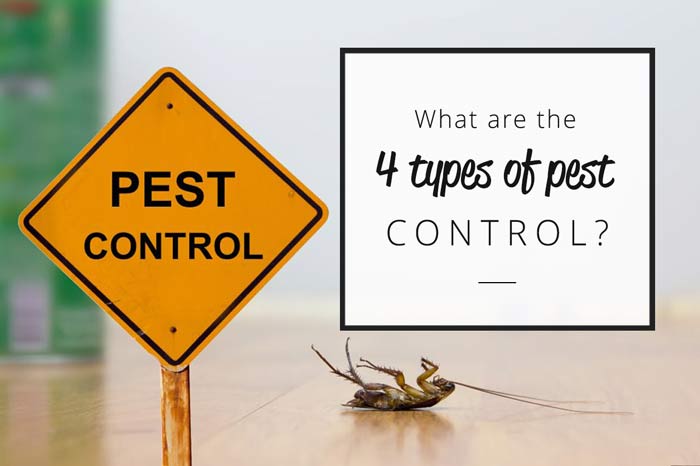How Pest Control can Save You Time, Stress, and Money.
Wiki Article
The Buzz on Pest Control
Table of Contents4 Simple Techniques For Pest ControlThe Facts About Pest Control RevealedHow Pest Control can Save You Time, Stress, and Money.3 Simple Techniques For Pest ControlA Biased View of Pest Control
Limitations of Chemical Management Be able to assess parasite problems, establish if monitoring is necessary, and make appropriate suggestions utilizing IPM techniques. Be familiar with different techniques of bug administration - their advantages and constraints.This phase talks about (IPM), a method that makes use of knowledge concerning parasites and their, methods, nonchemical techniques, and pesticides to take care of pest problems. Extra info regarding IPM for particular plants is included in chapters that focus on those plants. Nonchemical pest control procedures are stressed in phase 17, "Organic Horticulture." Handling birds and mammals is covered in chapter 20, "Wild animals." Handling in the yard and yard is covered in chapter 6, "Weeds." Bugs in a yard or landscape may consist of pests and mites, weeds,, mammals, and birds.
Bugs and weeds, however, play a duty in the. After growing a yard or establishing a lawn, the natural procedure of plant sequence starts to restore and nonnative plants.
What we call "insects" are part of a natural system at job. Just people take into consideration particular types insects when they occur where they are not wanted.
6 Simple Techniques For Pest Control
Bugs susceptible to a pesticide were rapidly eliminated, leaving immune ones to reproduce and increase. It came to be clear that chemicals alone would not address all parasite problems.An IPM strategy permits some level of bugs in the environment. Pests are much less likely to make it through a program that utilizes several different methods of reducing their populations. Integrated bug monitoring was first suggested by entomologists because bugs were the very first group of bugs to prove challenging to manage with chemicals alone.
bug and host properly. and think about economic or aesthetic injury. A limit is the point at which action need to be taken. a treatment technique making use of mechanical, cultural, organic, or chemical controls, or a combination of these approaches. success of therapies. IPM has expanded beyond bugs to management of all pest populations: weeds, disease organisms, and creatures.
Getting The Pest Control To Work
Management instead than elimination of insects is the objective. An IPM strategy begins with a careful evaluation of each parasite invasion.Clover growing in a lawn may be look these up deemed an unwanted weed, yet as a bean it is manufacturing nitrogen for the soil and the blossoms are supplying nectar to honey bees and other. Tolerance for some weeds might be part of an IPM strategy. might be eating the fallen leaves of a plant, yet when they are identified as the larvae of Eastern tiger swallowtail butterflies, their damage might be tolerated so we can appreciate the gorgeous butterfly.

The second most vital device in insect monitoring is very early intervention. Responding to issues quickly, before they have time to multiply, calls for a less significant intervention.
Some Known Questions About Pest Control.
Many safe, sensible, nonchemical techniques of plant security More Bonuses and bug monitoring might decrease or get rid of the requirement to spray. Various other approaches are most helpful when used with pesticides. To apply management methods appropriately and to decrease losses, gardeners should be conscious of the sorts of insects that assault plants and recognize pest biology.
Carrying out a dirt examination and using just the recommended quantity of plant food and lime makes the most of the advantage to the plant while reducing problems associated with excessive usage of fertilizer - Pest Control. Covering the soil with a number of inches of compost shields the plant in several methods: decreasing soil water loss to evaporation, reducing weed competition, supplying nutrients, and creating an ideal environment for earthworms and microorganisms that maintain the dirt loose for origins and break down organic material to launch nutrients
If mulch touches the trunk, it can develop a method for voles, germs, and fungis to attack the plant. Do not make use of manure or garden compost that has not extensively decomposed as a top clothing because it can encourage undesirable bugs. Study recommends that tilling the dirt is detrimental to soil framework.
Pest Control for Beginners
If tilling is regarded needed, think about doing it in the autumn when the life process of numerous bugs brings them near the surface area. At the surface, insects come to be subjected to the weather as well as birds and other all-natural adversaries. Fall tilling can additionally ruin bugs in crop deposits. Usage healthsome and this contact form insect-free certified seeds and plants if available.Report this wiki page